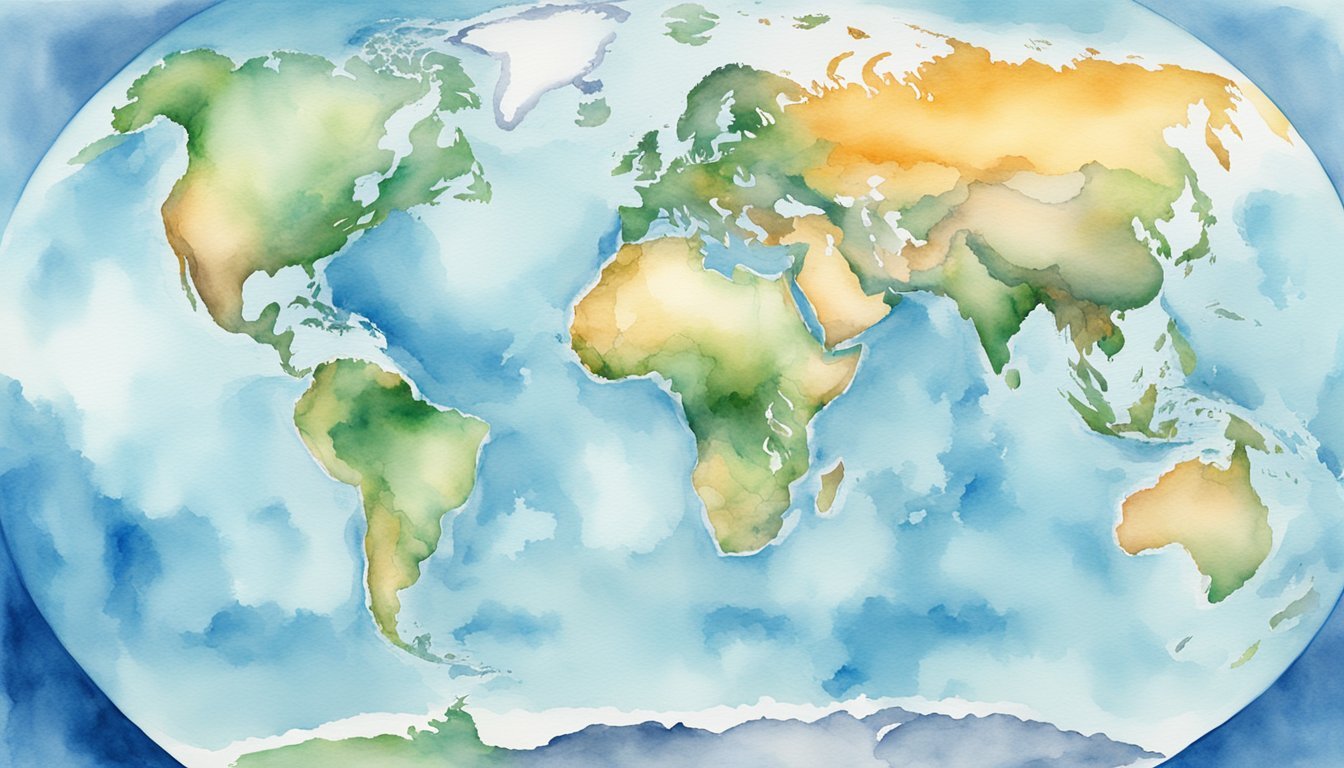Understanding Continents
The way we define and classify the large landmasses of our planet has evolved over time, with the concept of continents being central in both geographical and historical contexts. This section will detail the various aspects that contribute to our current understanding of continents.
Defining Continents
A continent is commonly identified as a large, continuous expanse of land distinctly separated by oceans. The Earth is composed of these landmasses, which hold significant geographical, political, and cultural value. For instance, the definition of a continent is not strictly determined by scientific criteria, but rather by convention. This has led to some debate over how many continents there actually are, with some models identifying seven continents, and others proposing as few as four.
Historical Perspective
Historically, continents have been identified in various ways. The Old World consisted of Asia, Africa, and Europe, while the New World brought attention to North America and South America. Over time, shifting geopolitical landscapes and increased global exploration led to the recognition of Australia and Antarctica as distinct continents as well. The concept of Eurasia as a single continent reflects the connected landmass, yet cultural differences often maintain their separation in the public consciousness.
Current Models
Today’s standard model recognizes seven continents: Asia, Africa, North America, South America, Antarctica, Europe, and Australia. However, this has not always been the case. The five-continent model includes just Oceania instead of Australia and combines Europe and Asia into one continent. The six-continent model—used by some international organizations—considers Europe and Asia as separate continents but does not distinguish Antarctica as a separate entity. Meanwhile, a four-continent model embraces a purely geographical perspective, considering the connectedness of landmasses regardless of the ocean barriers.
This diversity in models showcases the complex nature of how continents are viewed across different dimensions—geographical, cultural, and historical—reinforcing the idea that the concept of a continent is as much a human construct as it is a reflection of our world‘s physical geography.
Geography and Features of Continents

The division of land into continents outlines the Earth’s surface into vast landmasses distinguished by their unique geography, features, and characteristics. These geographical giants hold within them the stories of human civilizations, diverse ecosystems, and dynamic geological forces.
Natural Landforms
Continents are home to a variety of natural landforms, ranging from the towering Himalayas in Asia to the expansive Sahara Desert in Africa. Antarctica, largely uninhabited, hosts the planet’s largest ice sheets, while Australia is notable for its vast outback and unique land structures like Uluru. The shape and structure of continents are influenced by the tectonic plates upon which they sit, leading to fascinating features such as the U-shaped valleys in North America’s glacial regions and South America’s Andes Mountains, the longest continental mountain range in the world.
Countries and Territories
The political landscape of continents is fragmented into countries and territories, with Asia containing the most recognized nations, including highly populous ones like India and China. The interconnection of Europe and Asia, referred to as Eurasia, includes transcontinental countries such as Russia, which spans across both. North America houses both large nations like Canada and smaller regions like the Caribbean islands. In terms of population, continents vastly differ, with Asia housing over half of the planet’s population and Antarctica hosting a transient population of scientists.
Environment and Climate
Each continent possesses distinct environmental conditions and climates, shaped by their placement on the globe. Africa experiences a wide range of climates from its northern deserts to the equatorial rainforests in the Congo Basin. Europe’s climate is largely temperate, influenced by the Atlantic Ocean. In the Americas, the Amazon rainforest, within Brazil, represents one of the most biodiverse climates on Earth, while the cold tundras dominate northern North America and much of Greenland. Australia’s environment includes the Great Barrier Reef and the arid Outback, both unique in their climate characteristics.
Biodiversity and Habitats
Continental biodiversity is as varied as the landforms and climates they boast. The tropical rainforests of South America and Central America provide habitats for millions of species, while Africa’s savannas are renowned for large mammals such as lions and elephants. Australia and Oceania are known for their remarkable endemic species like kangaroos and koalas; the isolation of Pacific islands has led to unique evolutionary paths, as seen in New Guinea and Hawaii. Continental drift and plate tectonics over millions of years have shaped not only the geography but also the distribution of species across the Earth, with scientists continually discovering new species, enhancing our understanding of the natural world.

